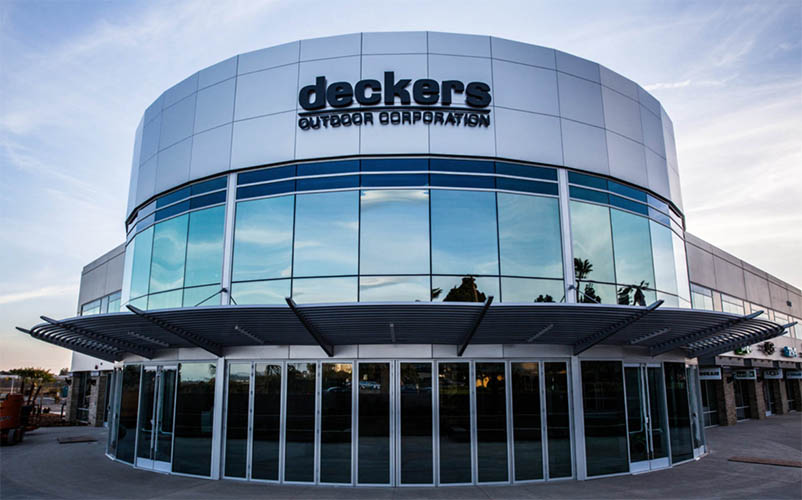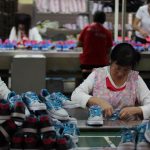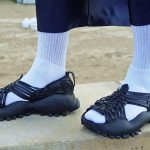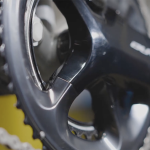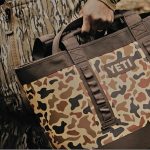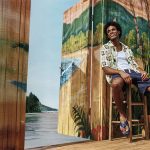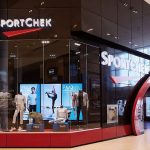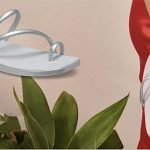<span style="color: #a3a3a3;">Deckers Brands’ fourth-quarter results missed targets due to the arrival of COVID-19 but continued momentum from Hoka One One as well as triple-digit gains in online sales to help limit the damage.
Indeed, first-quarter sales in the 45 days through May 15 were only trending down single-digits year-over-year versus consensus estimates calling for a decline of 36 percent.
Direct-to-consumer, led by digital, were up in the high-40 percent range during those 45 days, nearly offsetting wholesale declines in the mid-30 percent range due to store closures. Triple-digit e-commerce growth was driven by the full-price selling of both UGG and Hoka.
Dave Powers, CEO and president, on a conference call cautioned the first quarter traditionally represents roughly 5 percent of its annual sales volume, and the performance may not be indicative of future trends. But, he said, the company is “very encouraged” by the consistently strong interest in the UGG and Hoka brands as evidenced by Google Trends over the last two months. UGG search interest was up 73 percent over last year and Hoka search interest growth was second-highest among peer brands. Said Powers, “We think this speaks well to the power of our brands that consumers are actively searching and buying our products during a historically low period of consumer demand.”
He also said the company is experiencing a substantial gain in new customer acquisition online while noting that customers entering its online database have higher lifetime value and purchase frequency than those purchasing in stores. Said Powers, “We are especially excited about UGG customer acquisitions as this is typically a lower volume period for the brand, and our strategy aims to convert these new customers into repeat purchases down the road in the holiday period.”
…
<span style="color: #a3a3a3;">From a global brand perspective in the current quarter through May 15, UGG’s sales were down mid-single-digits due to lower wholesale shipments resulting from doors remaining shut as well as the impact of its owned retail store closures. About 20 percent of North America stores are open and operating at a limited capacity; roughly half of its EMEA stores are open; approximately 20 percent of its stores in Japan are open; all of its owned retail stores in China are open. Powers added on UGG, “However, we are very encouraged to see the pent-up demand being captured through our e-commerce channel.”
Hoka’s revenues are up in the low 30 percent range in the quarter-to-date period while revenues at Teva and Sanuk are down in the low-40 percent and mid-30 percent ranges respectively as these brands are experiencing a heavier impact due to the seasonality of their businesses.
Powers said, “While we feel positive about the trends we’re seeing in the business, there are still plenty of hurdles to overcome in a challenging consumer environment with social distancing practices in place and recessionary concerns that could pressure discretionary spending.”
…
In the fourth quarter ended March 31, earnings dropped 32.9 percent to $16.1 million, or 57 cents a share, from $24.0 million, or 82 cents, a year ago. Removing non-recurring items from the year-ago period, earnings were down 35.3 percent from $24.9 million, or 85 cents, for the same period last year.
Sales decreased 4.9 percent to $374.9 million and were down 4.5 percent on a currency-neutral basis.
Gross margin in the quarter was flat at 51.5 percent compared to 51.6 percent for the same period last year.
SG&A expenses in the latest quarter were $176.3 million, or 47.0 percent of sales, compared to GAAP SG&A expenses last year of $171.7 million, or 43.6 percent, and non-GAAP SG&A expenses last year of $170.4 million, or 43.2 percent.
Operating income declined 47.2 percent to $16.7 million. Operating earnings on an adjusted basis were down 49.2 percent.
For the full-year, sales increased 5.6 percent to $2.13 billion and grew 6.5 percent on a currency-neutral basis. Earnings improved 4.5 percent to $276.3 million, or $9.62.
By brand, Ugg’s net sales for the fourth quarter decreased 17.9 percent to $196.3 million compared to $239.0 million for the same period last year. For fiscal year 2020, net sales decreased 0.8 percent to $1.521 billion.
For the year, the ongoing European marketplace reset held back gains for Ugg. Ugg grew 5 percent in the U.S. for the second consecutive year.
Said Powers, “The Ugg brand strength in the US has been driven by high levels of brand heat through PR in targeted marketing investments, driving brand search interest up 8 percent as compared to last year; winning with younger consumers as DTC purchasers aged 18 to 34 increased by 29 percent versus last year; increased loyalty membership in purchasing as enrollment in Ugg Rewards increased 60 percent and revenue from members grew 19 percent as compared to last year with members spending more on average and diversified product mix as the Fluff Yeah and Neumel franchises, both drove significant growth.”
For the current year, Ugg will seek to build on the progress seen in its domestic business over the last three years “as work-from-home becomes the new normal for many of our consumers.”
Hoka’s sales for the fourth quarter increased 51.8 percent to $101.9 million compared to $67.1 million for the same period last year. For fiscal year 2020, net sales increased 58.0 percent to $352.6 million.
Hoka outperformed expectations set at the start of the year. Growth has been “consistently balanced” across the brand’s domestic and international businesses and across both wholesale and direct-to-consumer channels. Hoka’s increasing digital presence helped retained and new customers acquired nearly doubled year-over-year in the brand’s global direct-to-consumer business.
Said Powers, “Hoka brand success in fiscal year 2020 is a result of great heritage products, new product innovation and continued refinements of the Hoka ecosystem attracting new consumers. Hoka has significant momentum, and while broader market trends may limit the brand’s incredible growth rate in fiscal year 2021, we’re going to continue investing in Hoka to fuel our brand-led and consumer informed marketplace strategy.”
Teva brand net sales for the fourth quarter increased 12.5 percent to $59.6 million compared to $52.9 million for the same period last year. For fiscal year 2020, net sales increased 0.4 percent to $138.0 million.
Sanuk brand net sales for the fourth quarter decreased 57.8 percent to $13.3 million compared to $31.5 million for the same period last year. For fiscal year 2020, net sales decreased 38.1 percent to $51.2 million.
Powers said, “Both the Teva and Sanuk brands are attracting consumers with innovative product introductions that feature sustainability stories. This includes Teva’s Strap Into Freedom campaign highlighting their use of recycled materials now on nearly all their original sandal straps. Similarly, Sanuk continues to offer eco-friendly options, including their beacon collection. To amplify these efforts and embrace the ever-changing service specialty space, the Sanuk brand has recently streamlined operations to work directly with our internal innovation department known as Deckers Labs. By collaborating directly with Deckers Labs, we’re creating cost efficiencies in the business, while also reinvigorating the Sanuk brand’s innovation engine.”
By channel, wholesale net sales for the fourth quarter decreased 2.9 percent to $230.7 million compared to $237.5 million for the same period last year. For fiscal year 2020, wholesale net sales increased 6.9 percent to $1.396 billion.
Direct-to-consumer (DTC) net sales for the fourth quarter decreased 7.9 percent to $144.2 million compared to $156.6 million for the same period last year. DTC comparable sales in the fourth quarter decreased 3.7 percent versus the prior year, which excludes the final two weeks of retail store sales due to COVID-19 impacts. For fiscal year 2020, DTC net sales increased 3.1 percent to $736.9 million and DTC comparable sales increased 5.0 percent over the same period last year.
By region, domestic sales for the fourth quarter decreased 8.4 percent to $230.8 million. For fiscal year 2020, domestic net sales increased 9.6 percent to $1.402 billion.
International sales for the quarter increased 1.4 percent to $144.1 million compared to $142.1 million for the same period last year. For fiscal year 2020, international sales decreased 1.5 percent to $731.0 million.
Inventories were $311.6 million compared to $278.8 million, an increase of 11.8 percent.
…
<span style="color: #a3a3a3;">Deckers said the company continues to modify and evolve its operations in response to the COVID-19 pandemic.
On March 17, the company announced a temporary closure of its retail stores in North America and Europe. Subsequently, store locations in Japan were also temporarily closed. These temporary closures largely remain in effect across many locations at this time. Due to the extended closure for many of its store locations, the company has furloughed a portion of its retail employees. As stores begin to reopen, they will do so with modified operations including enhanced health and safety protocols. Additionally, some stores that have recently reopened are operating at a limited capacity as they continue to adapt to new and evolving challenges related to COVID-19.
The company’s distribution center in Moreno Valley, CA, as well as other third-party distribution facilities that the company leverages to service its operations, are currently open but may continue to operate at limited capacity due to the enhanced health and safety measures now in place. Certain disruptions to sourcing with its third-party manufacturers, which include material vendors and production factories, were experienced during the fiscal fourth quarter but have since been mitigated.
To mitigate the adverse impact of COVID-19, Deckers has reduced planned levels of operating expense for the upcoming fiscal year and has implemented a number of temporary measures to reduce operating expense, including restricting employee travel, suspending the hiring of certain non-essential employees, suspending annual salary increases, canceling or postponing certain events, converting in-person meetings to virtual platforms, eliminating or deferring other discretionary expenditures, and, in certain cases, seeking payment accommodations or deferrals.
…
As of March 31, Deckers’ liquidity position was over $1 billion dollars, which included $649.4 million in cash and cash equivalents and $469.5 million available under its existing revolving credit facilities. As of fiscal year-end, the company did not have any outstanding borrowings under any of its existing revolving credit facilities.
As of March 31, the backlog was up 4.6 percent but was roughly flat as of mid-May across brands as some cancellations were experienced related to COVID-19 disruption. Said Steven Fasching, CFO, on the call, “While we haven’t seen a large number of cancellations to date, we anticipate there will be additional cancellations and thus, are taking a cautious approach in planning the back half of fiscal year 2021. Overall, we are forecasting cancellations to outweigh reorders.”
The company is not providing full-year guidance for fiscal year 2021 due to the uncertainties created by COVID-19, but Fasching said the company expects total revenue will decline year-over-year. Hoka is expected to still experience some growth, albeit at a rate lower than seen in the first quarter-to-date trend. The Fashion Lifestyle group, which includes UGG and Koolaburra, is expected to face headwinds related to the continued international softness in wholesale cancellations.
“We have had meaningful discussions with our key wholesale partners to help inform our partnership in planning inventory buys and peak season volume,” said Fasching. “We believe a conservative approach in fiscal year 2021 will set up a strong return to our operating model in year fiscal 2022.”

